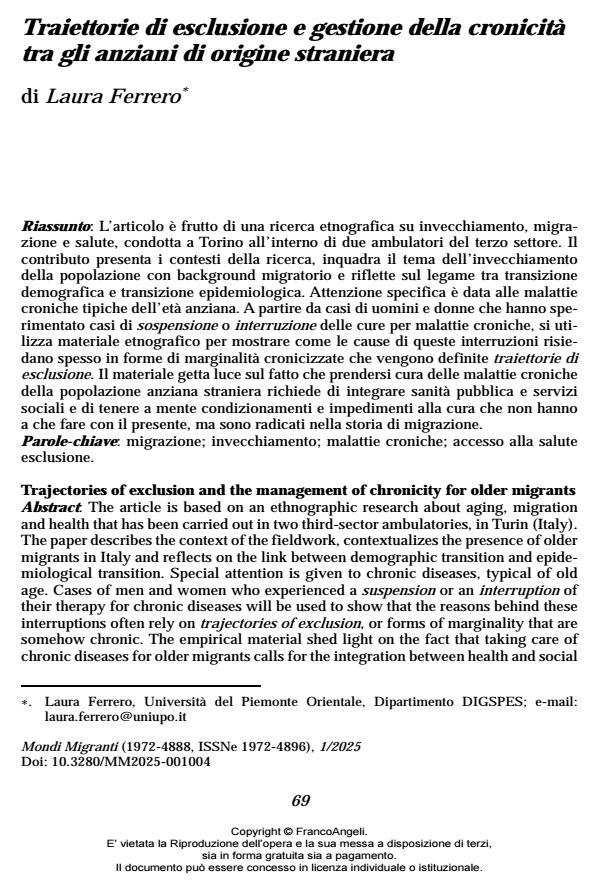Trajectories of exclusion and the management of chronicity for older migrants
Journal title MONDI MIGRANTI
Author/s Laura Ferrero
Publishing Year 2025 Issue 2025/1
Language Italian Pages 16 P. 69-84 File size 118 KB
DOI 10.3280/MM2025-001004
DOI is like a bar code for intellectual property: to have more infomation
click here
Below, you can see the article first page
If you want to buy this article in PDF format, you can do it, following the instructions to buy download credits

FrancoAngeli is member of Publishers International Linking Association, Inc (PILA), a not-for-profit association which run the CrossRef service enabling links to and from online scholarly content.
The article is based on an ethnographic research about aging, migration and health that has been carried out in two third-sector ambulatories, in Turin (Italy). The paper describes the context of the fieldwork, contextualizes the presence of older migrants in Italy and reflects on the link between demographic transition and epidemiological transition. Special attention is given to chronic diseases, typical of old age. Cases of men and women who experienced a suspension or an interruption of their therapy for chronic diseases will be used to show that the reasons behind these interruptions often rely on trajectories of exclusion, or forms of marginality that are somehow chronic. The empirical material shed light on the fact that taking care of chronic diseases for older migrants calls for the integration between health and social services in order to face obstacles to therapies that are rooted in the migratory experiences.
Keywords: migration; aging; chronic diseases; health; exclusion.
Laura Ferrero, Traiettorie di esclusione e gestione della cronicità tra gli anziani di origine straniera in "MONDI MIGRANTI" 1/2025, pp 69-84, DOI: 10.3280/MM2025-001004